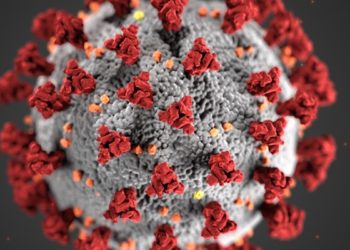Accuracy of glomerular filtration rate estimation with use of Cystatin C
1. Estimation of glomerular filtration rate (GFR) with the use of cystatin C resulted in similar results of GFR estimation that used race or ancestry.
2. Use of serum creatinine level to estimate GFR without race or genetic ancestry created systemic misclassification.
Evidence Rating Level: 1 (Excellent)
Study Rundown: Incorporation of race in the estimation of glomerular filtration rate (GFR) has recently come under scrutiny and criticism. However, concerns have been made about the possible misclassification of the estimated GFR after removing the race coefficient. There is a gap in knowledge as to understanding the relationship among race, genetically derived ancestry, serum creatinine level, and serum cystatin C level in order to identify methods to accurately estimate GFR without reliance on the race coefficient. This study found that estimation of GFR with the use of cystatin C resulted in similar accurate results of GFR estimation that was comparable to equations that used race or ancestry. This study was limited by the involvement of only research volunteers and insufficient sample sizes to allow the evaluation of subgroups. Nevertheless, these study’s findings are significant, as they demonstrate that the use of serum cystatin C rather than serum creatinine for GFR generates estimates of similar validity while eliminating the need for race-based formulations.
Click to read the study in NEJM
Relevant Reading: New Creatinine- and Cystatin C–Based Equations to Estimate GFR without Race
In-Depth [prospective cohort study]: This prospective observational study included 1248 patients enrolled in the Chronic Renal Insufficiency Cohort Study, a study of racially and ethnically diverse patients with CKD in the United States. Race, genetic ancestry markers, serum creatinine, serum cystatin C, and 24-hour urinary creatinine levels were collected. Patients who gave written informed consent were included. Patients who did not provide written consent were excluded from the study. The primary outcomes measured included estimations of GFR using serum creatinine, serum cystatin C, and race or ancestry coefficients. Outcomes in the primary analysis were assessed via multivariable linear regression and serum creatinine level and cystatin C level were log-transformed in all models. Among the participants, in those who identified as Black, a model that did not include race resulted in underestimation of GFR and lower accuracy (percent of estimated GFR within 10% of measured GFR, 31%, [95% Confidence Interval 24 to 39]). The incorporation of serum creatinine level did not eliminate the misclassification that was introduced by removing race or ancestry from serum creatinine-based GFR estimations. However, when using cystatin C measurements and not race or ancestry, accurate estimates of GFR were found in Black participants (percent of estimated GFR within 10% of measure GFR, 41%, [95% CI 34 to 49]). Overall, this study determined that the use of serum creatinine levels without incorporation of race or ancestry results in significant systemic misclassification of estimated GFR levels, but that use of serum cystatin C levels results in similar and accurate estimated GFR levels that do not require the use of race or ancestry-based equations.
Image: PD
©2022 2 Minute Medicine, Inc. All rights reserved. No works may be reproduced without expressed written consent from 2 Minute Medicine, Inc. Inquire about licensing here. No article should be construed as medical advice and is not intended as such by the authors or by 2 Minute Medicine, Inc.







